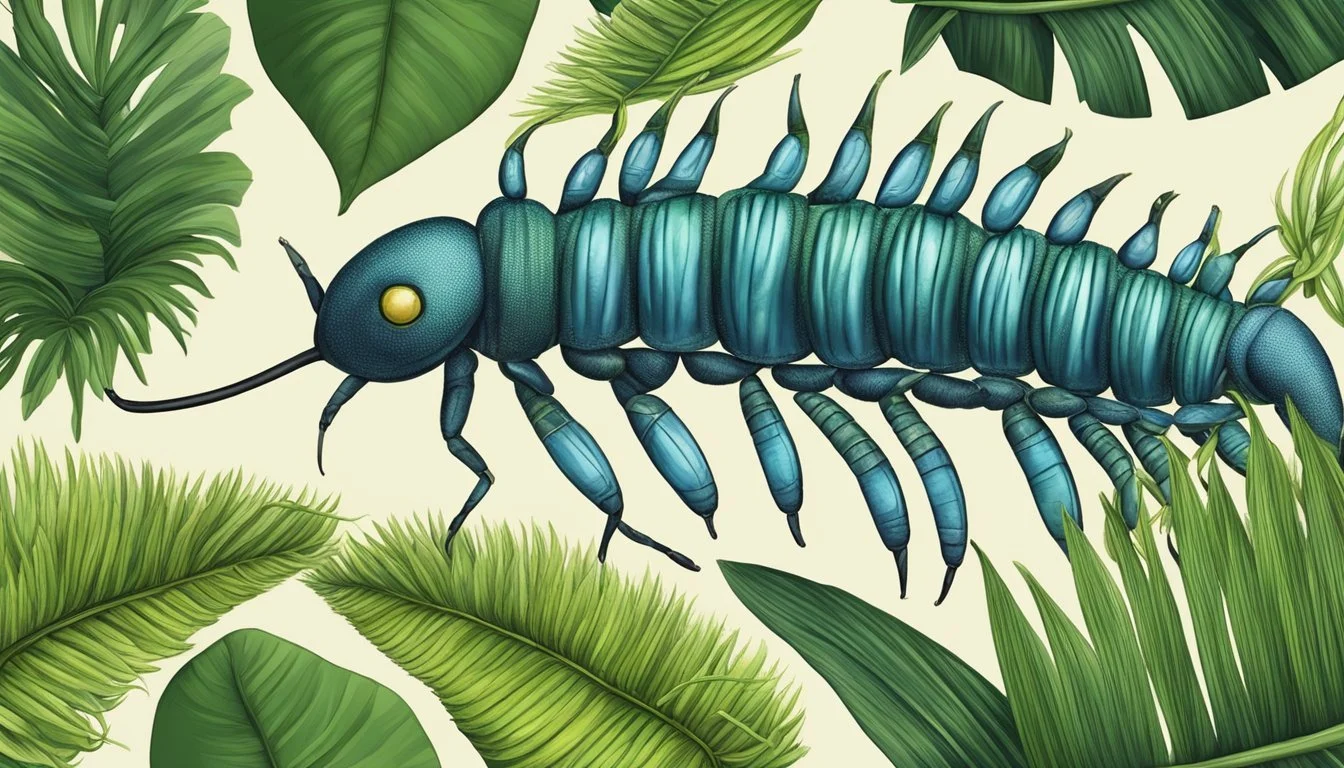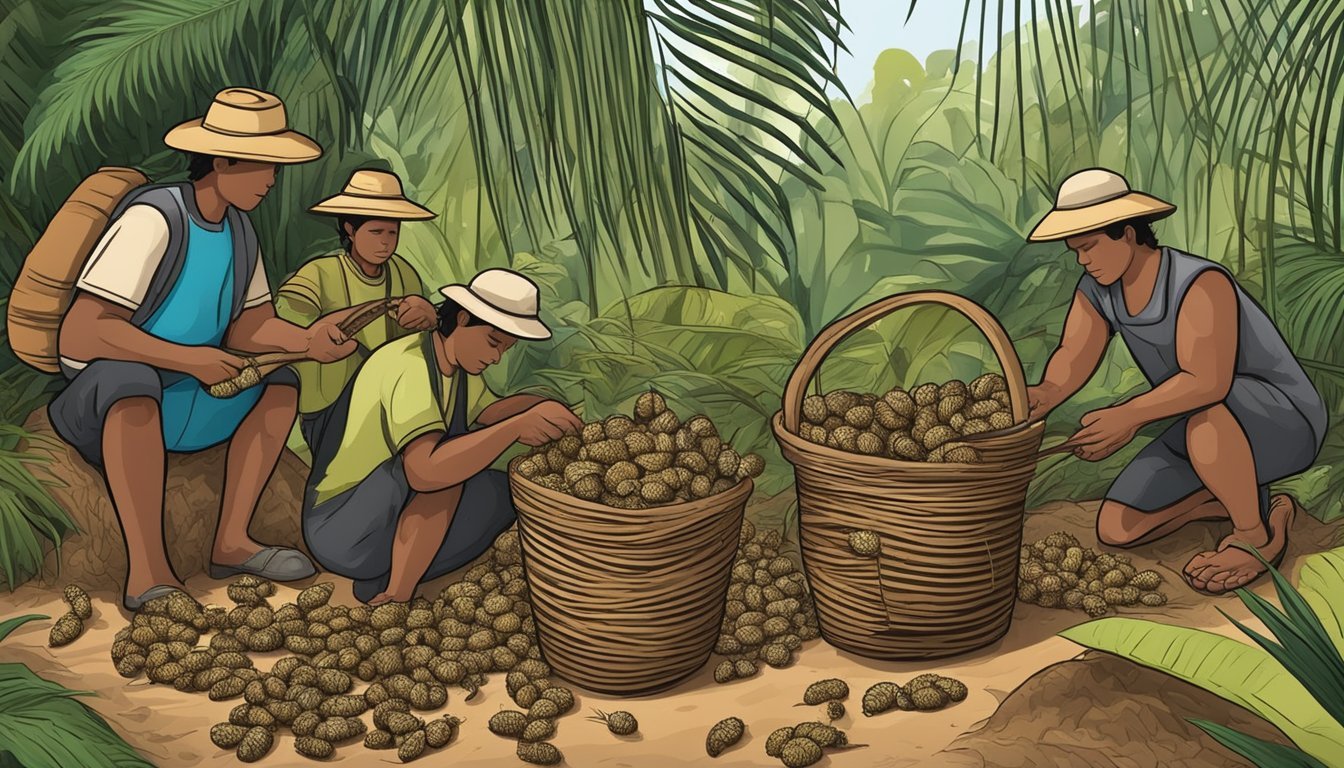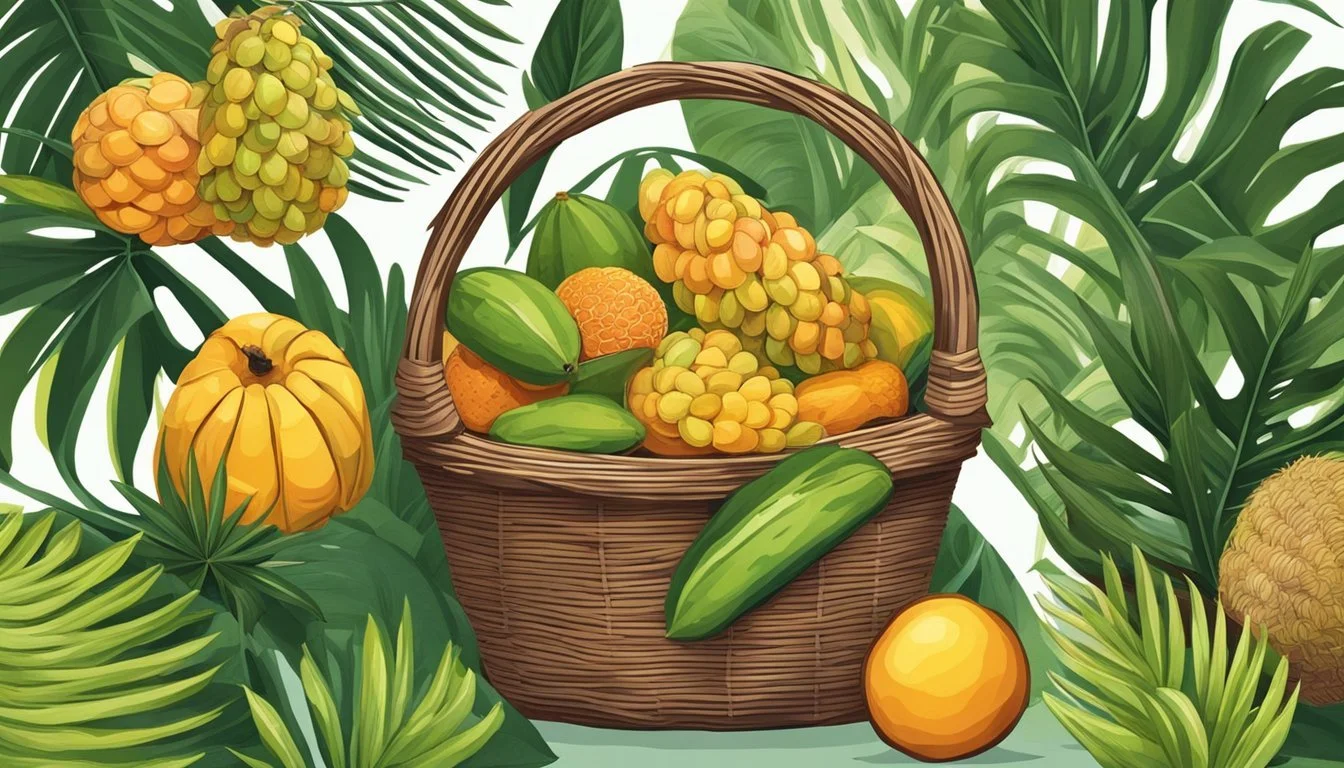Palm Grubs Unveiling the Amazonian Jungle Delicacy
In the vast and biodiverse expanse of the Amazon Rainforest, a unique culinary tradition thrives on the larvae of the palm weevil, commonly referred to as suri grubs. These grubs play a significant role in the diets of various Amazonian communities, largely due to their nutritional value and availability. Found burrowing in palm trees such as the aguaje palm, which is widespread throughout the region, suri larvae are regarded as a sustainable source of protein and are consumed by locals for their rich, creamy texture when cooked, and a nutty flavor reminiscent of cheese.
The tradition of eating suri grubs is particularly prominent in Peru, where these insects are not just a meal but a delicacy enjoyed in various forms. They can be roasted, fried, or even served raw and are known to provide a host of nutrients, including essential fats. This practice also highlights the intrinsic connection between indigenous Amazonian people and their environment, as the collection and consumption of suri grubs represent a deep understanding of the ecosystem's offerings.
Despite the initial hesitation some might feel about consuming insects, the acceptance of suri grubs in diverse culinary forms across Amazonian cultures illustrates a broader, global potential for entomophagy – the practice of eating bugs – as a sustainable and nutritious food source. The larvae's role within the Amazon's food systems underscores a delicate balance between culture, nutrition, and the environment.
Cultural Significance
Palm grubs have emerged as a significant element in the culinary practices within the Amazon and hold deep-rooted ties to Peruvian culture, reflecting the region's ecological diversity and the traditional livelihood of its people.
Traditional Amazonian Cuisine
Within the lush ecosystems of the Amazon, indigenous communities have for centuries relied on the bountiful natural resources for their dietary needs, among which the palm grub has been a staple. These grubs, which are the larvae stage of the South American palm weevil, provide a source of protein and have been traditionally harvested by residents from the heart of palm trees. Across the Amazon region, including areas surrounding the bustling Peruvian city of Iquitos, palm grubs are a common sight.
Street vendors and local marketplaces exhibit these larvae as part of the authentic taste of the rainforest.
They offer both cooked and raw larvae to Peruvians and tourists alike, sharing a piece of the Amazonian dietary tradition.
The approach to cooking these grubs varies, but they are typically served roasted or fried, praised for their rich, nutty flavor.
Suri Grubs in Peruvian Culture
The suri grub, specifically, has risen to prominence as a reflection of the Amazon's gastronomic identity, especially within Peruvian culture. In Peru, the suri is not only a food item but also an emblem of the region's connection to the rainforest.
It is customary to find these grubs in various preparations, with Peruvian style cooking methods bringing out different flavors and textures.
In social and festive gatherings, particularly around Iquitos and other parts of South America, the suri is served as a delicacy, representing a harmonious coexistence with the rainforest's life cycle.
These practices emphasize the importance of sustainable food sources and showcase how local indigenous communities honor the natural provisions of their environment. The consumption of palm grubs, including the suri, is an integral aspect of cultural identity, community, and survival for many in the Amazon.
Biological Overview
In the diverse ecosystem of the Amazon Rainforest, palm weevils and their larvae play a significant role both ecologically and as a food source for indigenous communities. Their lifecycle intricately connects with the health of palm trees, and their harvesting offers both opportunities and challenges to sustainable practices in the region.
Palm Weevils and Suri Grubs
The palm weevil (Rhynchophorus palmarum), commonly known as suri when in its larval stage, is an insect native to the Amazon Rainforest. The larvae, which are a traditional food for many indigenous groups, are particularly noted for their nutritional value. As a delicacy, these grubs have fostered a sustainable business model, providing income to local populations who often collect them from wild palms.
Lifecycle and Habitat
Palm weevils go through a complete metamorphosis, starting from egg, advancing to larva (grub), pupa, and finally to the adult beetle. The larvae are typically found within the trunks of palm trees after the adult weevil lays its eggs. These trees, crucial to the weevil's reproduction, can be affected by deforestation, challenging both the diversity of species and traditional food sources. The weevils' habitat, which primarily consists of different species of palm trees, contributes to the rich biodiversity within crops and forested areas of the Amazon.
Culinary Practices
Palm grubs, known as suri in the Amazon region, feature prominently in local culinary traditions. Their preparation ranges from simple grilling to incorporation into complex dishes.
Traditional Preparation Methods
Before suri are cooked, they typically undergo marinating in a concoction of herbs and spices. Salt and garlic are common ingredients in the marinade, enhancing the naturally nutty flavor of the larvae. In traditional preparations, suri can be skewered on a thin stick and grilled over an open fire. This method highlights their taste and adds a crisp texture to their exterior, while the inside remains tender.
Popular Suri Dishes
Two popular dishes that feature suri are 'anticucho de suri' and 'chicharrón de suri.' Anticucho involves skewering the marinated larvae and grilling them, often alongside green plantains, to add a starchy counterbalance to the protein-rich grubs. Chicharrón de suri sees the larvae fried in oil or butter until they achieve a crunchy texture similar to pork cracklings. Both dishes are prized for their ability to blend the inherent taste of suri with the flavors of cooking fats, herbs, and marinades, delivering a unique culinary experience.
Nutritional Benefits
Palm grubs, widely consumed in the Amazon, are not only a traditional food but also a nutritional powerhouse containing essential nutrients that are beneficial to human health.
Protein and Vitamin Content
Palm grubs are an excellent source of protein, comparable to other traditional meats. They are rich in vitamins, especially vitamins A and E, and are known to contain beta-carotene, an antioxidant that the body converts into vitamin A. This composition makes them not only a hearty option for those looking for alternative sources of protein but also a means to improve overall diet quality by providing essential vitamins that are crucial for maintaining good health.
Comparison to Other Meats
Compared to conventional meats, palm grubs offer a unique nutritional profile:
Beef: While beef is praised for its protein content, palm grubs offer a similar level of protein with added benefits such as higher levels of beta-carotene and certain vitamins.
Chicken and Fish: Chicken and fish are considered lean meats with a relatively low fatty flavor. Palm grubs, however, provide a creamy texture and a hazelnut-like flavor that is distinct and often preferred in many Amazonian cultures.
Guinea Pig (Cuy) and Paiche: In some cultures, guinea pig and paiche are traditional sources of protein. Palm grubs are an alternative that can provide a more fatty content, which can be seen as either a flavorful benefit or as something to consume in moderation, depending on dietary preferences and needs.
Iron Content: They are also a good source of iron, an essential mineral for blood health, often found in red meats like beef.
By incorporating palm grubs into their diet, individuals can enjoy a food that not only adds variety to their meals but also contributes positively to their nutritional intake.
Sensory Attributes
The sensory appeal of palm grubs in Amazonian cuisine is defined by their distinctive texture and flavor profiles. When prepared correctly, these larvae provide a unique tasting experience that intrigues the palate.
Texture and Flavor Profiles
Palm grubs, when raw, possess a creamy texture that may be surprising to those unfamiliar with eating insects. Cooking methods, such as grilling or roasting, transform their texture significantly. Roasted palm grubs develop a crispy exterior while maintaining a tender interior, offering a pleasant contrast with each bite.
Flavor-wise, palm grubs are often described as having a fatty flavor that carries a subtle sweetness, similar to that of certain shellfish. (What wine goes well with shellfish?) The fatty content gives them a satisfying richness, making them both a delicacy and a nutrient-dense food source.
Tasting Experience
When grilled, the palm grubs' flavor is enhanced, and they may be seasoned with spices to complement their natural taste. The roasted versions often appeal to those who prefer a smokier, more robust flavor. On the other hand, the creamy and mild nature of raw palm grubs is typically preferred by traditional consumers, who appreciate their natural flavor.
In summary, the sensory attributes of Amazonian palm grubs hinge on their preparation. Whether enjoyed raw, grilled, or roasted, each method adds a distinct sensory dimension that contributes to the overall tasting experience.
Economic Impact
The palm weevil larvae, known as Suri in Peru, contribute significantly to the economies of Amazonian communities through their role in local markets and influence on sustainable practices.
Local Economies and Harvesting
In the Peruvian Amazon, Suri larvae harvesting constitutes an important economic activity. Local harvesters venture into palm trees, particularly the aguaje palms, to collect these grubs. Given the demand for Suri in both local markets and restaurants like Mamacos in Napo, the sale of these larvae can provide a vital source of income for indigenous families and forest inhabitants. The value chain stretches from the heart of the Amazon where the larvae are sourced, right to the tables where they're considered a delicacy.
Suri as a Sustainable Resource
Sustainable business practices in the harvesting of Suri are critical in areas like Peru, where deforestation and the loss of crops pose environmental and economic risks. When integrated into a sustainable business model, the use of Suri as a resource promotes the preservation of aguaje palm trees, as communities recognize the economic benefit of maintaining healthy forests. Sustainable handling of these larvae encourages a balance between usage and conservation, facilitating the renewal of natural resources and thus supporting both the environment and local livelihoods.
Ethical and Environmental Considerations
The harvesting of palm grubs, such as the suri larvae from the Amazon rainforest, taps into complex ethical and environmental discussions. These involve the impact on biodiversity and the intricate balance between indigenous practices and forest conservation.
Impact on Rainforest Biodiversity
The Amazon rainforest boasts an exceptional level of biodiversity, which is vital for global ecological balance. Harvesting palm grubs, when done excessively, can lead to deforestation and disrupt the life cycles of palm weevils and their host plants. Conscientious harvesting practices are essential in countries like Peru, **Colombia
Interaction with the Global Market
In the heart of the Amazon, palm weevil larvae — known as suri grubs — are not only a local delicacy but also exhibit potential for global market expansion. Their rising popularity among tourists and the increasing interest in exotic foods have begun to position suri as a product with export potential.
Tourism and Exotic Delicacies
The Amazon region, and particularly Peru, has seen a growing influx of tourists intrigued by local cuisines and eager to experience unique cultural practices. In Peruvian cities, suri grubs have become a highlight for adventurous food lovers. As part of immersive travel experiences, visitors often seek out traditional foods, including these larvae, which are praised for their nutritional value and distinctive flavor. This tourism demand has sparked interest in integrating Amazonian food items into more international culinary circles.
Trade and Export Potential
Although suri grubs are traditionally consumed within the Amazon region, their trade and export potential is being explored. With a reputation for being a nutritious and sustainable protein source, there is a preliminary market outside of South America, specifically in niche sectors that cater to exotic and sustainable foods. However, logistical challenges, such as preservation and meeting international food safety regulations, present hurdles that need to be navigated carefully to ensure successful integration into the global market.
Precautions and Controversies
When consuming palm grubs as a delicacy, one must consider potential health risks and the ethical implications of their harvest and consumption.
Health Concerns with Wild Larvae
Consuming wild larvae, such as the suri grub, raises health concerns particularly related to parasites. These grubs can host a range of pests in their intestines that, if consumed by humans, may cause gastrointestinal infections. Moreover, the manner in which the larvae are prepared, whether cooked or eaten raw, can significantly affect the potential for health risks. Indigenous communities are often expert in the safe preparation of these larvae, but outsiders may not be as knowledgeable or cautious.
Cultural Appropriation and Ethics
The harvesting and consumption of palm grubs have deep cultural significance for indigenous communities in the Amazon. They play a role in traditional diets and customs. However, as the popularity of consuming exotic foods grows globally, ethical questions arise regarding cultural appropriation. Outsiders consuming these larvae as delicacies must be sensitive to the cultural heritage they represent and the impact of their consumption on local ecosystems and the sustainability of the species. Moreover, there is a conversation to be had about the rights of indigenous groups to control and benefit from their traditional food resources.








